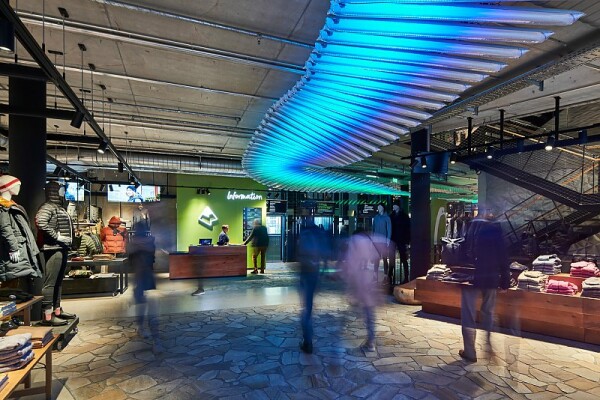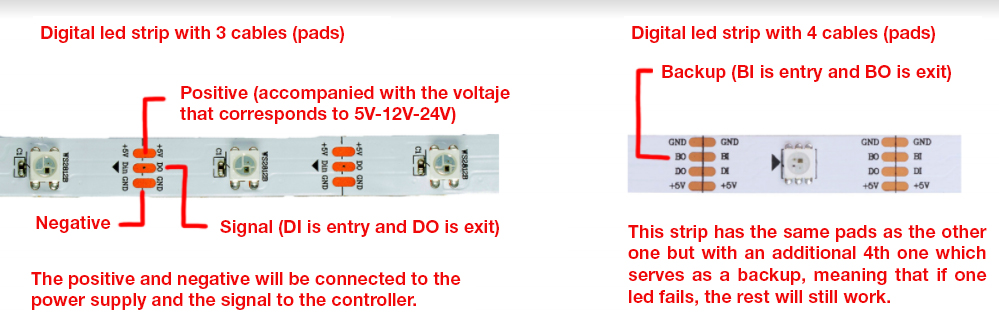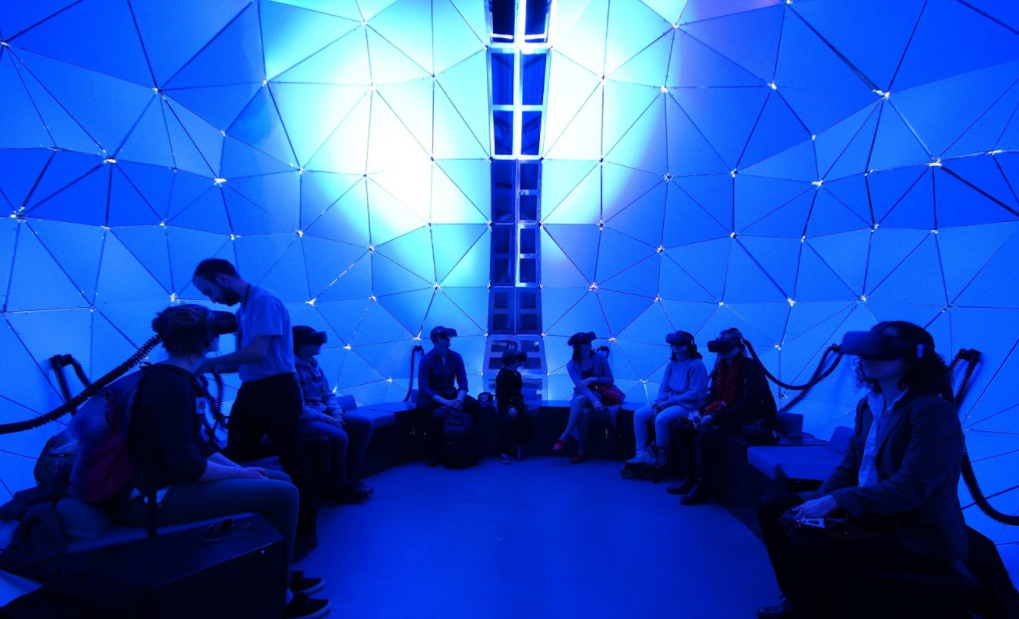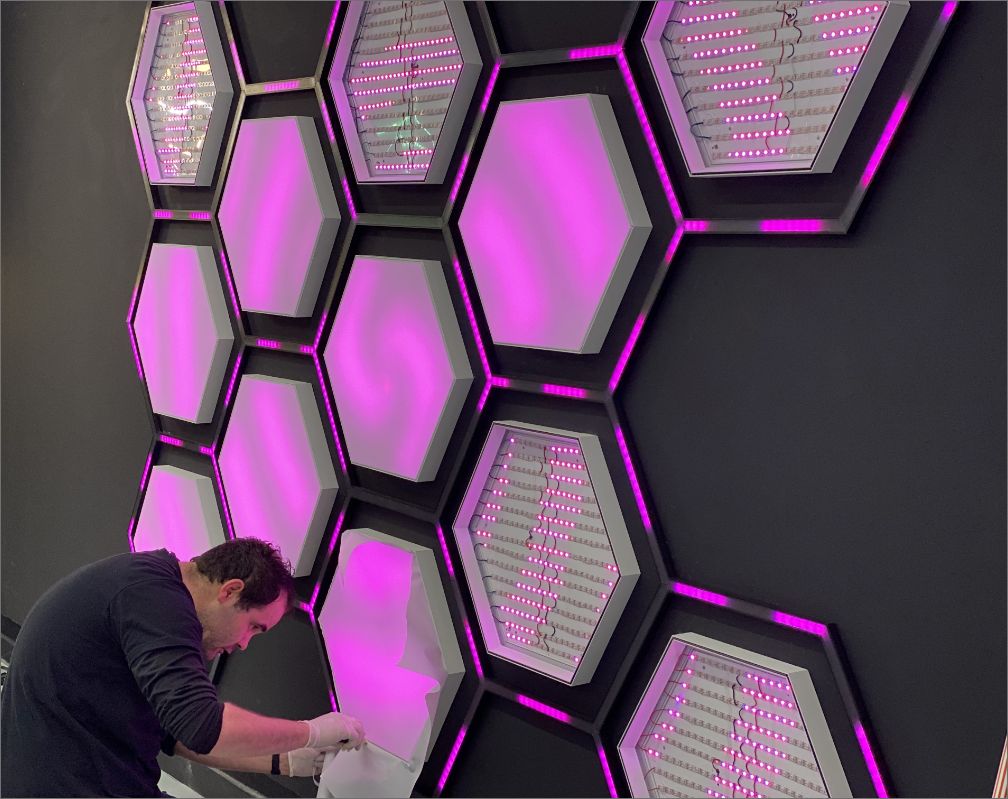
Anybody who has studied marketing and advertising knows that a picture is worth a thousand words and that a picture with movement even more so than a motionless one. This is the main difference between a normal led (static led or led with a uniform colour change) and a digital led (dynamic).
While a conventional led strip (or a led module, plate, etc…) illuminates uniformly, digital led products allow us to choose which leds light up and which ones don’t and also the power (dimming) and even which chips work and which don’t within the same led (in RGB and RGBW leds).
We have to remember that the main function of digital lighting is not technical illumination but rather decorative lighting or for marketing purposes, where we usually work with RGB and RGBW leds, since the power is normally low.
If we look at a conventional led strip and compare it to a digital one, we will notice a series of differences amongst and one stands out over the rest; an arrow image on the PCB. The arrow indicates the operating direction of a strip and this is because a digital led strip, unlike conventional ones, has an operating direction. Since we have some leds on and some off, we will have to number every led before we carry out specific commands (for example, switch off led 53 and switch on led 38). All this is possible as long as we have an entire “map” of all the identified leds in our installation.

Another noticeable difference concerns the welding pads, which have different images. We will find GND, which corresponds to the negative, +5V, +12V, +24V, which correspond to the positive (what comes after the + symbol refers to the tension of the electric supply of the strip), DI (located at the beginning of the cuttable section) and DO (located at the end of the cuttable section), which indicate the data input and output respectively. This helps us to know the operating direction of the led strip.
There is still another key component in digital led which sometimes can be seen and sometimes not: The IC (integrated circuit).
The IC receives the data from the controller and commands the led to turn on or off. There are many types of IC and they can be either external or internal (within the led itself). The external ones can be easily seen because they are usually placed close to the led in the PCB, whereas the internal ones lie within the led structure, as if it were another chip. They are very small and go without being noticed unless you pay close attention.
It is thought that being so small, the IC inside the led is less operational and more unstable and can also affect the functioning of the led (also making the product more expensive). Nevertheless, it’s an ideal solution when we have to place many leds per metre in a small space (something we couldn’t do with an external IC).
While internal IC control one single led, external IC are able to control one single led or groups of 2, 3, 4 and even more leds, thus enabling us to work at higher voltages and to minimise voltage drops, which are tricky and dangerous with digital led installations.
 The problem with controlling a group of leds via one single IC is that, when the leds are turned on and off at the same time, once the system goes dynamic, slight differences in the movement or the change of colour will be noticed. In order to avoid this, there are new IC which enable us to command various leds together while controlling each one of them.
The problem with controlling a group of leds via one single IC is that, when the leds are turned on and off at the same time, once the system goes dynamic, slight differences in the movement or the change of colour will be noticed. In order to avoid this, there are new IC which enable us to command various leds together while controlling each one of them.

Although most of the products with digital led have been working with 3 cables (GND, +5V, DI), for some years now it’s becoming more popular to use products with 4 cables which incorporate BI-BO (Backup In for the beginning of the section and Backup Out for the end of the section).
This backup allows the led strip to remain operative even if one led is not operative.
In order to provide a better understanding of this concept, we will explain how a led strip works:
The first led in a strip (or rather, IC) receives all the information concerning the command details (turning on, turning off, dimming to 30%, etc), but it also receives the information regarding the command details for the rest of the leds in the strip. The first IC keeps its own information while it transmits the rest of the information to the second IC. The second IC proceeds likewise with the third IC, etc. What happens when a led stops operating? The chain of information starting from the malfunctioning led will be lost, we will stop transmitting the signal and will see the leds which are not lit up.
In order to avoid this, leds with a backup channel were created, which is basically a security track which ensures the system’s continuity in case of malfunction with one led.
We must understand that, just like the RGB led, digital led needs (apart from tension) a signal which can be received by controllers with 1 or various channels (depending on how complex and long our installation is). Also, we will have to program everything in order to achieve the desired effect by means of multiple software available in the market.
Here at Luz Negra we opt for “Create”, a simple yet very efficient software developed by the Spanish company Protopixel, although there are many others such as Madrix, Led Edit, Led Build and similar- Most offer free access there are also more complicated, professional ones which require subscription.
There are numerous led digital applications currently being used.
There are many different applications such as light boxes for the signage industry, where we can choose which part of the sign display we want to illuminate, with special effects or to make logos and brand names stand out. Other common areas are stages, concerts, theatres or television studios where dynamic and spectacular illumination is totally necessary, along with restaurants, hotels and exhibitions where a well-chosen lighting system can offer modern and elegant effects, at the same time, bringing to life the small details.
Digital lighting has been growing at an exponential rate in the past years and there is no doubt whatsoever that it will be a very large landmark in the future of lighting concepts.

Luz Negra has a showroom designed specifically for digital led, where we can find linear, matrix or volumetric displays, light boxes acoustic textile fronts, methacrylate fronts, etc. Our company offers training courses for all our friends and readers of Todolux - Lighting influencers.
Nuño Téllez
CEO Luz Negra



